Friday Film: The Leica M Monochrom vs Leica M6 on a wedding
By Joeri van der Kloet – see his website HERE
Let me start with explaining what I do for a living. I am a documentary wedding photographer, based in the Netherlands and a little more than two years ago I switched from a DSLR to the M-system. I work with one M9 and one M9-P and a couple of lenses. Being a documentary photographer, my approach to wedding photography is to capture real moments, without interfering in these moments. For me, and for my clients, this approach really works. The Leica M fits perfectly in this approach, after lots of practice though. During a wedding, things are happening fast, so focussing and exposure have to be adjusted continuously. Manually of course. I have trained myself to focus my lenses within an instant of a second.
A few months ago I was asked by Transcontinenta, the company responsible for Leica in the Netherlands, whether I would be interested in testing the Leica M Monochrom on a wedding. Sure, I was interested! However, I didn’t feel like ‘testing’ a new camera on one of my clients, so I asked my friend Vivian, who is a wedding planner, if she had clients that would be interested in having a second shooter on their wedding. She came up with two couples and because I was available for those dates, I decided to shoot both weddings. The same day my contact at Leica called me and told me he had made a mistake. The Monochrom would only be available on the second date. Vivian however had already promised her clients that I would be there as a second shooter. I told her I’d come anyway, bringing another black and white camera: my trusty old Leica M6. The couple was excited and I was scared to death. Why on earth did I just say that?
I started in photography with manual film cameras: the Minolta XD-7 and XD-5. However, I had never covered a wedding with these things. When I started doing weddings, I had already switched to (D)SLRs. I don’t use my M6 that often. For professional work, it is not very usable. For fun photography, I also take the M9.
So I decided to keep it very simple. I packed ten rolls of Kodak T-Max 400, my M6, a 35 and 50, a three-stop ND-filter, my Gossen external meter and drove all the way to the venue. During the day I shot seven rolls of film and only used the external meter occasionally. I trusted my internal exposure computer – my brains – and even left out the battery of the M6. I had to shoot at long shutterspeeds – 1/8th – and at very fast shutterspeeds, but it didn’t bother me at all that I was stuck to 400 ISO. Since I’m not exactly a machine gun shooter with the M9, the need to take ten pictures of the same moment is non-existent. Compared to a normal M9-wedding, I had to wait and anticipate more with the limited amount of frames that I had. On the other hand, it was quite fun and I enjoyed being able to work with the M6. Also, I loved the inconspicuousness of the M6, which I prefer to the M9 because of the shutter that is way more silent. Because the depression of the M6-shutter is quite big, I used a soft-release, to prevent camera shake.
After the wedding, I mailed the films to a specialized company of which I was quite sure they’d do a good job. A little nervous, I opened the package a week later. Within one minute I knew that my internal exposure computer was still working great! All frames were perfectly exposed! Not a single one was ruined. A week later, when I had some time on my hands, I started camera scanning the frames. I needed a fast and cheap method, since the job was completely unpaid. Using my 5D2, a speedlite and a 90mm macro, I worked my way through the frames. It still took me more than a day to scan them all and I hadn’t even started selecting and editing yet. From the first frame on I decided to go hardcore: I would scan the edges of the frames and not crop the final image. It meant I had to throw away quite a few pictures that otherwise would have been good. Framing can be a little hard in the heat of the moment. Also, tilted shots, that otherwise would have been cropped, became unusable. Was I being too hard on myself?
The more time I worked on the frames and files, the happier I became. Although the files are far from clean – TMax is pretty far from clean either – they have a unique feel and character. Maybe I fell in love with these pics, because I put so much effort and time in them, but to me they are pure and authentic. It is just one camera, two lenses, a few rolls of film and loads of work. Of course, I would have preferred to make some very nice fine-art prints in the darkroom, but I don’t have one and my dark-room skills are rusty.
The Monochrom
A few weeks later I picked up the M Monochrom and I couldn’t wait to see the results of this much praised camera. Having countless hours of experience with the M9, the Monochrom wasn’t hard to get used to at all. Even the post-processing wasn’t that hard. I only used Lightroom and was satisfied with the results. Compared to the scanned files from the M6, the Monochrom files are easier to work with, since they are so much more flexible. The toning is amazing, as is the crisp sharpness and the ability to use high ISO. After getting used to the camera I shot a wedding as a second shooter. While driving to the venue I thought it might be a good idea to make a comparison between the two cameras. Lots of things have been said about the Monochrom and one of the things is people saying: “I already have a Monochrome. It’s called Tri-X and my M2/3/4/5/6/7”.
During the wedding, I found it hard to resist picking my M9 from my bag just to take some shots in colour, but I figured that would blur the experience. The wedding was one big party with many, many kids, lots of colours everywhere and there I was with a black and white camera.
I can’t say it felt different from shooting with the M9. The shutter is the same, as is the sound. The only noticeable difference is the high ISO capacity and that was useful. I even left my 35/1.2 at home for that reason. The biggest difference is during post-processing. There you’ll notice that sometimes black and white just doesn’t work, or sometimes just rocks! Also the files are more flexible than the M9 files and that is a good thing.
Would I take the Monochrom or the M6 to one of my own weddings? No, unless I was asked to do so. In my work I use roughly 60% color and 40% black and white and that works. However, I like to be able to decide afterwards which picture will be converted to black and white and which picture will be in color. This is obviously not possible with the MM. With the M6 I would only use it with a couple of extra film bodies. One for high ISO film, one for color, etc. I would also have to invest in a high quality scanner and even then I would have to spend more time on each wedding, meaning my price would increase. Even though I would like that idea to work, I don’t think I can sell it. So if I, as a professional, had to choose between the two cameras, I’d go for the Monochrom. However, besides being a professional, I still have a passion for pure, raw documentary photography. And for me, the M6 just adds to the sensation of documenting reality. Despite the technical limitations of these pictures, I think I prefer them to the far better M Monochrom output. Maybe I even prefer them BECAUSE of the technical inferiority. I don’t know.
I would have loved to keep the MM for a couple of weeks, but I had to return it. The M6 however will stay with me. Although I only shoot a few rolls each year, the amount of sheer happiness it delivers makes it impossible to part with it.

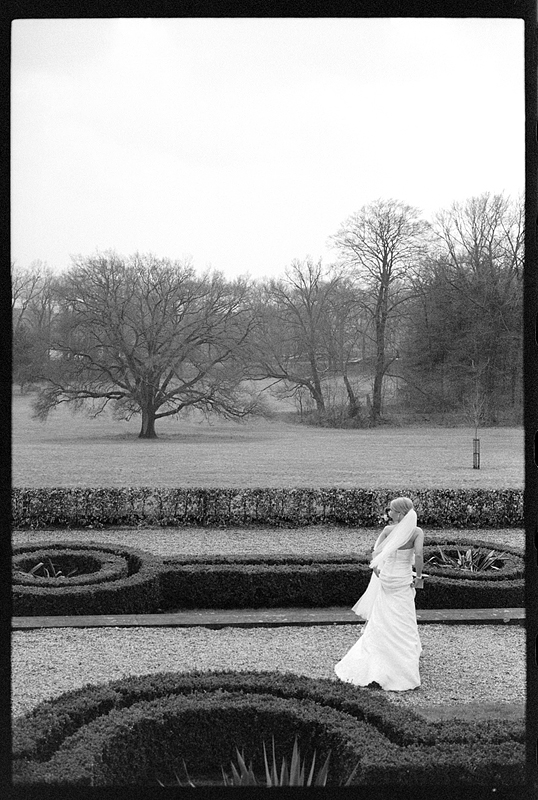
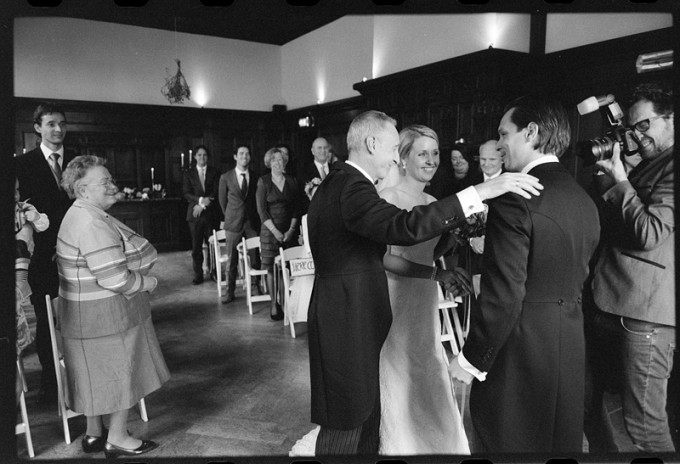
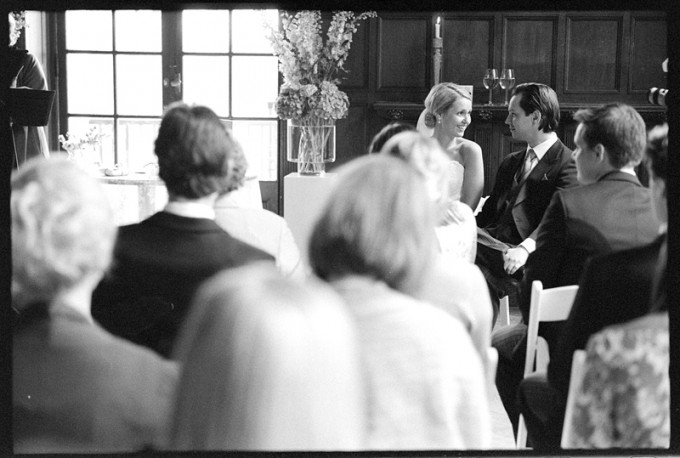
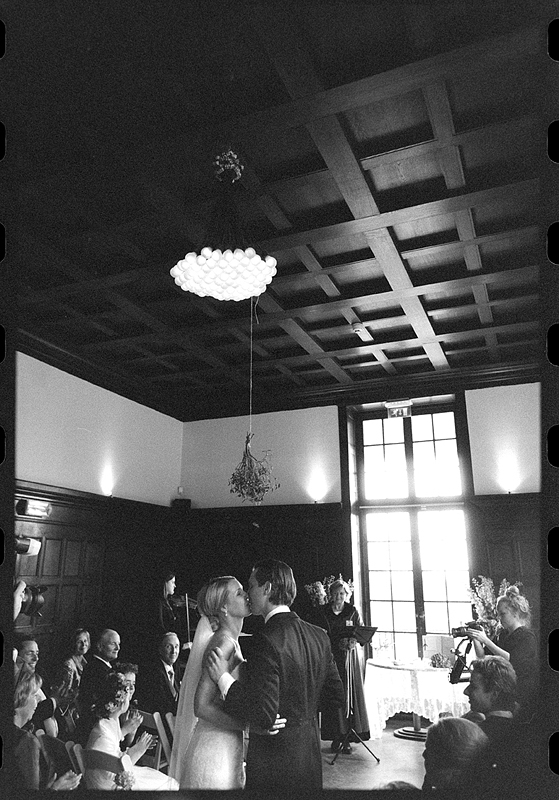
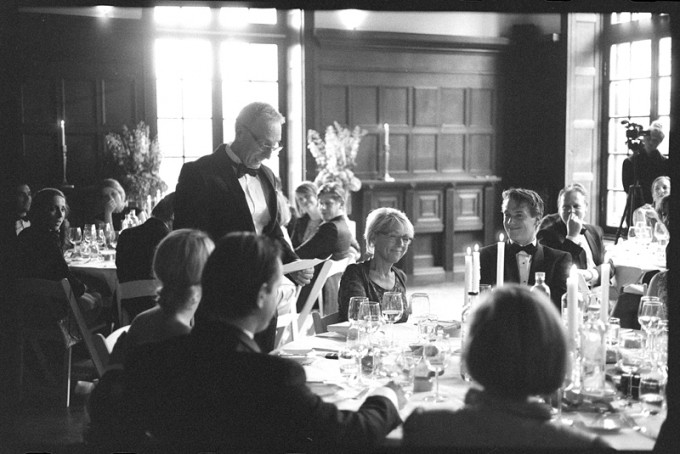
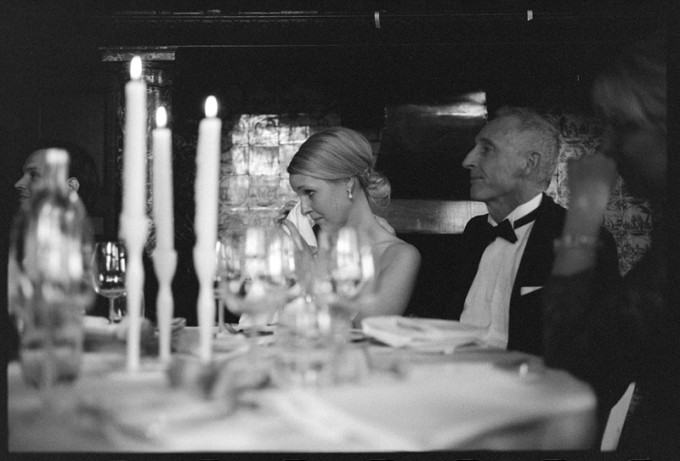
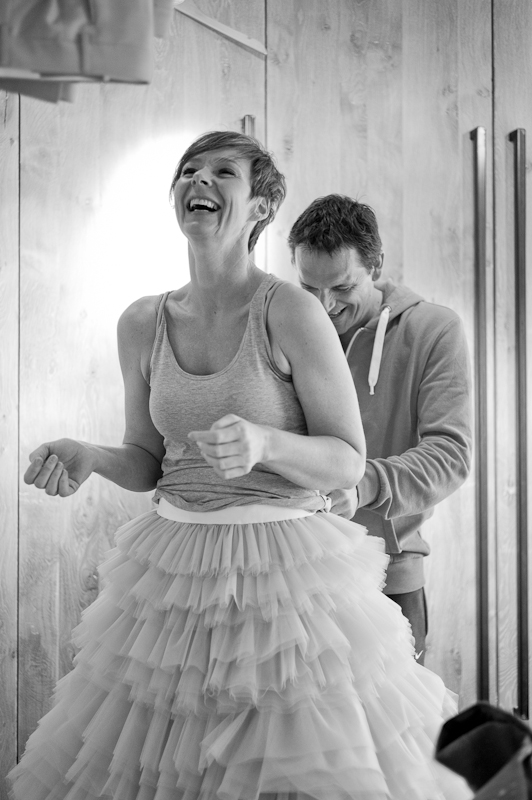
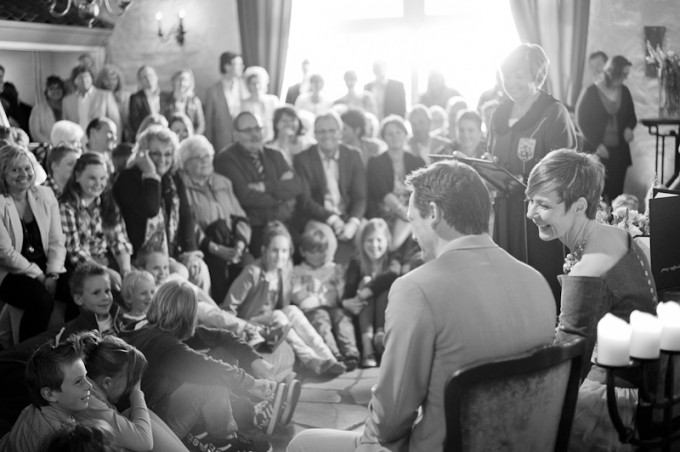
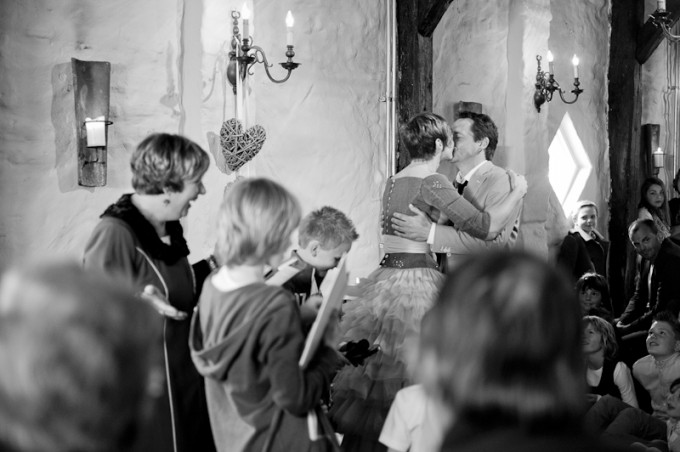
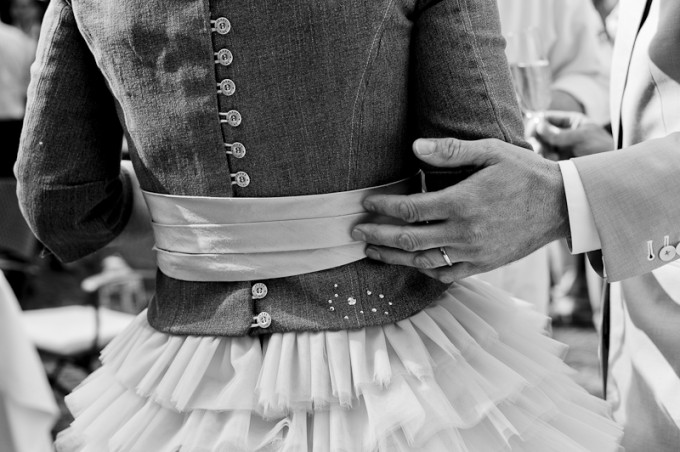
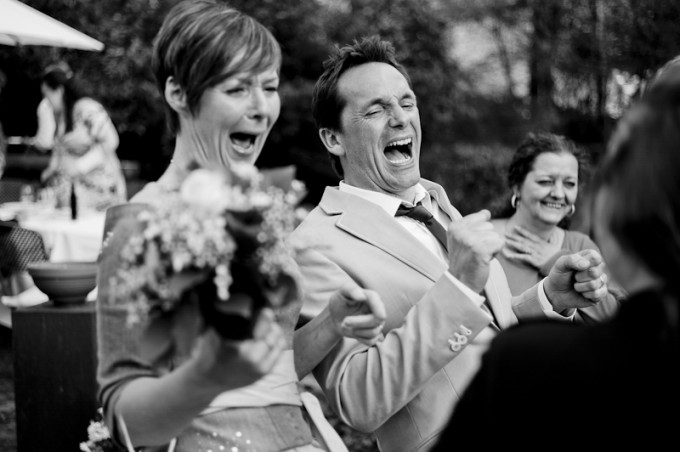
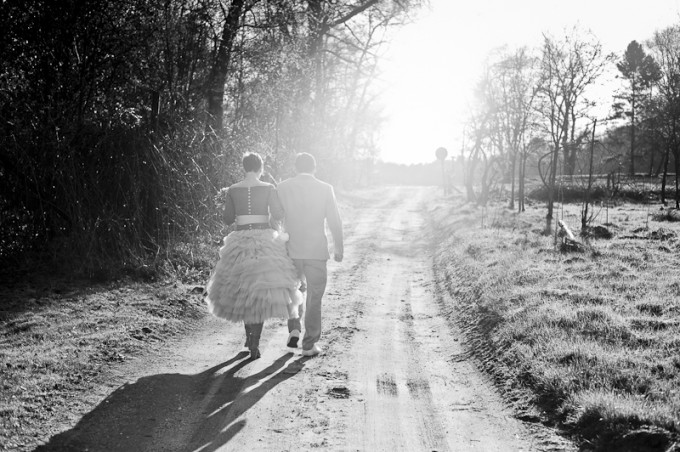
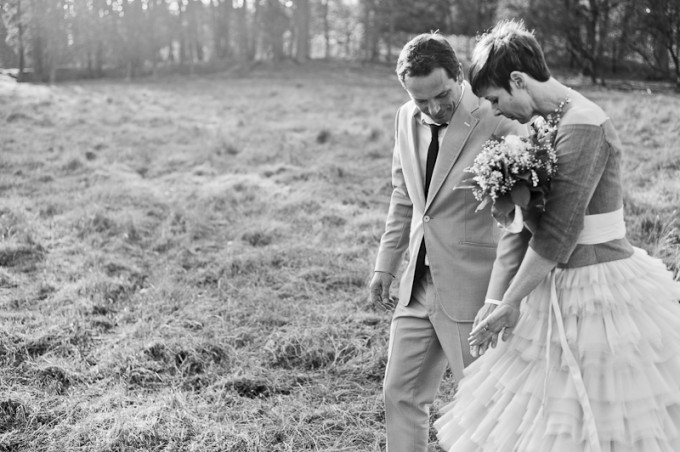


Hi Joeri,
Nice article. I just happen to run into it when researching whether to buy a M6 TTL 0.85 + Coolscan 9000 (with the scanning service prices for a basic 48 bit TIFF being so high in NL, hell I would charge 5 euros a frame if there was a market for it) or a Monochrom. To be honest I am leaning towards the M6 + scan and I can still play with colour film if I wish to as opposing to the monochrome which is only B&W. But financially they will cost about the same, not to mention it seems they both need a fair amount of time in post processing to get the look you want (Monochrom and scanned film). I know it is a matter of taste but in your expert option, if you could choose, which direction would you go for (reading back it seems I have already decided but maybe I just need a “push”)?
Cheers
Caio
PS.: I am focussing much faster now. 🙂
Are these images shot at Rhederoord? Daar zijn we onlangs geweest als mogelijke bruiloftslocatie voor ons eigen huwelijk;-)
Just as I thought. The film blows the digital away, big time. It’s amazing how people see what they WANT to see on this. From the first shot I went WOW, great shot. Knew it had to be film. But all them dentists are lined up to buy the digital Leicas. Ha!
I have a new M 240 and an M7. I much prefer the M7. Ektar 100 shot through a Summilux 35mm F/1.4 FLE gives a pastel color rendering that I am unable to recreate with the digital M
Beautiful shots from all 3 cameras. I purchased a M9-P in anticipation for my daughters birth and with that I have a used M3. I have the modern 50 Summilux on the M9P and the vintage 50 on the M3. Both cameras have given me great photos, though I havent really sold off the 5D2 yet cause I expect my little one to be running around a lot. I been very tempted to get a MM after seeing the shots posted on MM groups in facebook. I recently developed some film on a served M3/50 and was very impressed with it and this article has calmed me down in terms of looking at a MM =) so I say, THANK YOU.
The film looks deeper and more grey value to it! I could be wrong, but that what my eye sees
Would the type of lens 6Bit or an older one produce a different effect on the Leica MM or M9P? Do you notice any difference? Purely an academic question.
Absolutely! The look depends on the lens used and the camera.
Beautiful pictures.
Thanks!
Want to know how to sell film over digital to your clients? Show them an image captured on Tri-X and printed on 20×24 silver gelatin paper next to the same image captured digitally and printed professionaly on 20×24 archival inkjet paper. When given the choice, I’ve yet to find someone who prefers the digital capture over film.
I’m working on it… I never use inkjet prints for my wedding work though. Always proper prints from a darkroom Durst Ypsilon.
Great work with both cameras! The M6 pictures have a great “feel” to them that I just love, but I also love the clarity and crispness in the MM pictures. Too bad I can’t afford either body, let alone the lenses to attach to them. But this article (and your photos) shall serve to inspire me further in my ongoing photographic life experience. Thank you.
Thank you!
Thanks, great reading and viewing ! To me the practical and commercial advantages of digital imaging are clear and hard to argue with for anyone in your profession . Equally it is clear the film images seem to offer a feel, tonality and depth clearly missing in the digital images – choices, choices 🙂
Yes, just like in real life.. 😉
It’s all about choices.
Inspirational! Always wanted a Leica Monochrom, but for now Fuji X100 shall do for me 🙂
X100 is great. Get the ‘s’ if you can…
The 2nd wedding looks more intimate, natural and fun…
Both cameras deliver great images.
Thanks for sharing
Thanks Alex
. . .this was a great read & display which i relate so much to.
thanks!
I have done a lot of side-by-side comparisons with 35mm digital, medium format digital and 35mm film and medium format film, with camera such as Leica M6, Mamiya, Phase One, Rolleiflex, Sigma Foveon-sensor cameras and the Leica MM. In available light and with studio strobes. Printed with Epson 3880 and in wet darkroom. The most striking differences are, in my opinion, are in this order: 1) paper (no inkjet print can compete with FB silver prints because of gloss differential etc.) 2) bayer sensor cameras destroy red/blue details and generally require USM making the images easily look a bit artificial and even then the images seem to be flatter (less 3D) than film images or Leica MM/Foveon images 3) real film grain that is not destroyed by scanning looks really nice with some films such as with HP5+. Contrast, tone, color sensitivities etc. can be dialed in to be equal. What I think is best of both worlds is using a Leica MM or a Foveon-sensor camera (might be even better because of the color advantage (channel mixing)!) and then printing a digital negative and then contact printing it in wet darkroom to a real photographic paper. Been doing it and I’m pretty happy about the results even though medium format PanF+ (taken carefully with excellent lens) printed in wet darkroom is still quite super good in its overall “look” excluding the fact that a lowly Sigma DP3M _easily_ beats it in the amount of details captured and is quite close to the overall “look” when everything is dialed in to emulate the same look and especially when contact printed to real photographic fibre-based paper.
Well, that is exactly what I’ve been doing for years now. All my digital negatives are printed in a wet darkroom at a company specialised with this work. They use a Durst Ypsilon and the results are stunning. The DNG’s come from the M9 however, not a MM.
Very nice story and shots. My favorite: the M6, way better toning/rendering than the MM
I even see quite some flare in the MM shots, but of course that is not due to the MM itself.
The MM flares in the same way the M9 does with my summicrons. I like it though…
Both media have their merits and some people will prefer one and some the other. I’ve used film and I’ve used both M9 and MM. I can’t say which is better but they’re not the same thing, any more than watercolour is the same as oils.
Firstly, you are a professional photographer so why not continue to shoot film as well, build a portfolio to compare and then show your prospective clients and let them choose what medium they want their special day shot in?
Secondly, it just isn’t giving film a fair chance to scan like this. Either scan at the best resolution possible, or (to me) better still, find a printer who will make the real deal. If print costs are higher, clients will pay more I’m sure.
It is possible, of course you know this, to make your digital B&W look more film-like, so maybe that’s a third route. Look at the new Salgado Genesis Project – almost entirely shot on digital but all put through Tri-X emulation. For me, your MM pictures are too clean and clinical; many will love this look.
I can’t sell my film M bodies either.
I would love to know which of your shots the couples preferred, as really isn’t that all that matters?
Thanks for a really interesting post!
Well, actually I’m thinking of using these developed films for making an album with hand made prints. I’m busy now with other weddings though, so maybe in winter when I have some time on my hands.
Lovely and I admire both results
Personally.. I am more into the film results …
The MM looks too…
well too bright and perfect …
Keep up the great photos !
William Jusuf
Thanks William!
Great article.
I think that with classic glass the MM would be my choice.
I have used both.
Ease of use and the results are astounding .
Sure the M6 has class however there is so much more work required .
Just my 2c
Apart from the 90 elmarit I don’t have any classic glass, but I’m sure it will look great. Ease of use becomes more important with more weddings…
Personally, Joeri I find working within the imperfections of film for me to be creatively challenging, more so than digital.
I like your first wide film shot at the beginning, and your kiss shot under the light.
These are timeless. Your digital wedding works commercially, but for me the images are less engaging…I prefer more oak in my wine, less clean, if this makes sense.
I used to shoot BW weddings on kodak c41 process (t400?) anyway, the film gave a wonderful smooth tone, when scanned by the lab.
There’s certainly more grit in your Tmax, but the shadows are less forgiving. Thanks for the insight..Chris.
Thanks!
“The ‘old’ debate between film and digital in b&w is, imho, totally irrelevant.”
Not sure how it can be “irrelevant,” when we have reasonable and responsible minds debating it herein. It’s relevant, because we all prefer the convenience of digital, but so many of us prefer the character of film. The ‘debate,’ then, is a matter of compromise, and the discussion relates to whether we, as individuals, believe the qualities of the film image are worth the ‘hassle,’ time, and expense.
I thought this line about the M6 in the original text was funny: “For professional work, it is not very usable.”
My take: The M Monochrom pictures are sharp, and clear, and ‘realistic.’ The film pictures are evocative, and ‘classic.’ I prefer the film. I disagree with the assessment that the digital has ‘better quality.’ Quality, to me, must also encompass character, and film images almost inevitably have more character. Take a Modigliani and eliminate the brush strokes. It may then be ‘crisper,’ but it loses its ‘handmadeness’ in the process. Photography, for those over 20 years of age, has always been about the sum total of the shooting experience and the subsequent process. When you change or eliminate half of that equation, you get half the photograph.
The other matter is that the digital may be closer to medium or large format in sharpness. Which, for certain contexts, may be an advantage. But, when shooting street or reportage, we sorta expect grain, because our visual libraries are built from decades of 35mm or vintage film grain images. If you shoot ‘street photography’ with a Pentax 67, you’re going to get a very different ‘quality’ of image than with a Leica M3. Our internal reference tells us that even though the 6×7 shot will be sharper and grainless, it’s somehow ‘wrong.’ The more reference you have, the wronger it will be. Somehow, even an Elliott Erwitt 35mm shot, full of grain and blown up to 36″ x 54″ will be absolutely RIGHT.
I can’t wait until film simulation software becomes so stunningly accurate that we can no longer perceive a difference. It’s good now, but it’s not there yet, and much of the problem is with operator issues. Many people applying the effect just don’t have the taste level to do it ‘right.’ But, even five years from now, when Silver Efex X is The Bomb, i hope camera manufacturers will have made cameras that are more satisfying to use than the current digitals. I’m ‘in the market’ for a 5DMkIII, and ironically, i’m dreading the purchase. I would much rather buy a Contax RX or a Hasselblad 203FE or a Pentax 67…. Film cameras just FEEL better. They feel like “photography,” and not like “pixel capture.”
Dexter, my “irrelevant” meant: stop trying to make digital b&w (or colour for that matter) look like film. Using software filters, overlays, whatever. It’s pathetic.
If you want an image to look like Tri-X, or FP4, go the old road. Think about subject, exposure, developer. Then scan.
Give digital (b&w or colour) full credit for what it is; don’t butcher it.
Mike,
1) I agree with you, wholeheartedly, that the ideal for a film aesthetic is to shoot film. I currently don’t own any digital cameras, but i have in the past, and will again soon.
2) That said, my aesthetic preferences are fully film-based, and will continue to be so. Any digital output will be treated toward that aesthetic. And, that will include filters, and/or overlays. I will work that way when needed, and will only be satisfied when the results are convincing. I’ve already achieved results that would convince another viewer. My dissatisfaction is due to the fact that i can’t fool myself, because i know what i’ve done.
3) You discount the needs of working/professional photographers, who have clients, and deadlines and in the current environment, do not typically have the luxury of shooting film. And, those photographers, myself included, still have not lost the love of the ‘film look’ and do not enjoy seeing their digital output looking so… digital.
4) I’m not in alignment with you over giving “digital full credit for what it is.” I don’t see it as an ‘end result.’ It’s a tool. A foundation or base for doing whatever you want with it. The key is taste and tact, and that’s a matter of execution. There will come a time when the software is good enough to create fully realistic emulations of film, and then we’ll have the best of both worlds. Until then, i’m going to have to “butcher” the files to get them to look the way i want… when i have to shoot digital. When i don’t have to shoot digital, i’ll continue to enjoy (and prefer) all my film cameras.
Well put. I think I said ‘technical quality’, but in the end I think we agree on it. You say that there might be a day that we no longer perceive a difference between digital and film. However, just knowing you’re actually working with film – or hiring someone to work with it – is part of the perceiving. If digital looks exactly like film, it still isn’t.
Well put Joeri.
CKDH says “..Our internal reference tells us that even though the 6×7 shot will be sharper and grainless, it’s somehow ‘wrong.’ The more reference you have, the wronger it will be. Somehow, even an Elliott Erwitt 35mm shot, full of grain and blown up to 36″ x 54″ will be absolutely RIGHT.”
You mean like hearing astounding quality music from a CD is ‘wrong’ because there’s no surface noise or crackle (compared with 78 shellac discs)?
And watching hi-def colour TV is ‘wrong’ because there isn’t any smear, the lines aren’t visible, and there’s a stable vertical hold?
You mean like watching digital cinema projection is ‘wrong’, because there are no scratches, the image doesn’t jump, and you don’t see the leader countdown at the start of a reel?
D’you mean that looking at photos on a computer screen, or a web page, is ‘wrong’, because they should be projected with a smoky magic lantern, or be seen only on flimsy, glossy, 10″x8″ curled-edge paper?
If these are all the case, shouldn’t we be exchanging opinions not by instantly typing responses via the web ..but by writing our ideas by hand, folding the paper into an envelope, sticking on a stamp, and posting it off to ‘Amateur Photographer’, to be printed a week or perhaps a fortnight later?
Why d’you feel that only grainy 35mm film is “absolutely RIGHT”?
“..Photography, for those over 20 years of age, has always been about the sum total of the shooting experience and the subsequent process. When you change or eliminate half of that equation, you get half the photograph.”
Not for me.
I’m “over 20 years of age” (..I’ve been shooting, developing & printing pics since 1954..) but I wholeheartedly welcome digital, and – especially – the high-ISO, smoothly less-grainy MM for black-and-white.
Elliott Erwitt shot with film, Eve Arnold shot with film – so what? How far back do you want to go to establish what’s ‘right’ and what is ‘wrong’?
Shouldn’t we all be shooting black-and-white paper negatives like Fox Talbot? Or is the wet collodion process the only ‘right’ way to shoot?
It’s like declaring that all car journeys are ‘wrong’ ..unless they’re at 5 miles an hour, with a man holding a red flag walking in front of you!
Yeah. What you said.
Except for one thing: vinyl sound WAAAAAAAAAY better than CD (and a good turntable does not produce snack, crackle and pop). Most people just haven’t heard a quality unit. And that is a fact. Vinyl has outlived CD for a reason.
Jan
I welcome digital too. Both sets of photos are very good. In the end, the medium used to make them is less important than we make it out to be. The “handmadeness” of film is an illusion, because the image is not handmade and the grain is not handmade. Film is machine made and the processing is often machine made too. The part of photography that can be said to be handmade is what happens between the eyes, mind, hand and camera, and that connection is shared by both media. Film is more evocative of a film look, but it’s not more evocative per se.
You obviously mistook my use of the word “‘wrong.'” I enclosed it in a single quote intending it to mean that Wrong is obviously a perception. And, by using “wronger” later, i thought it was obvious we weren’t being literal.
Still, facts are facts. We do, indeed, have internal references that tell us, as individuals, what ‘fits’ in a given context. And, obviously, contexts do evolve as we do as individuals, and as culture and society evolve.
Your audio (et al) references are apt, but do prove my point. Yes, digital audio WAS considered ‘wrong,’ in comparison to analog. There was once a study in which listeners where presented with a CD recording and then an LP of the same material. They preferred the LP. Then, they were presented with the CD version, but with a small percentage of noise mixed in. They preferred the CD with noise to the clean CD. That was because, at the time of the study, listeners were only accustomed to hearing music with noise backgrounds. Obviously, that has changed, and i’m certain the results would reflect that. So, “wrong” at that time would have favored the built-in (learned) reference.
Why do i feel only grainy 35mm film (for street) is “absolutely right?” For one thing, i’m not the dictatorial sort, and only make ‘semi-declarational’ statements for myself. But, for another thing, if i feel that way, it’s because i have not yet seen consistently excellent alternatives. While you may favor clean, grainless, color, contemporary street scenes, i find no value in them. To me, it looks like ‘every day,’ and i can see every day for myself. I prefer photography with what i consider to be ‘character,’ and that can come in many different flavors. But, i don’t often find it in digital. Those are my tastes. They’re evolved, learned tastes, and i’d match them against anyone else’s. But, everyone feels that way about their tastes. That’s why people buy new Mustangs, wear Dockers* and flipflops, and watch Two and a Half Men.
*Can’t even pick on Dockers anymore. Even THEY have evolved.
Your audio example is flawed. No mention about the study comparing the noisy CD to the LP. Listeners preferred the LP to the CD and they preferred the noisy CD to the clean CD. From the CD to CD comparison a conclusion was reached why listeners preferred the LP over the CD. Within the whole study we could come up with more than a dozen variables unaccounted for. For starters, was the quality of the reproduction equipment equal? Was the quality of the software equal?
I agree with you if all you are saying is that there is no right or wrong. Just different aesthetics which we subjectively favour. Some will favour 35mm film, others medium format film, others digital images.
However, most of your examples don’t cut it as close parallels to the genuinely aesthetic issues at stake when choosing one of the above media. There really is a style difference, which for some people is significant, whereas no one wants to watch anything on an old 1970’s colour tv.
Great article,proffessional,concise.Thank you for sharing your experience,and impartial attitude over the eternal dispute film against digital.Excellent photos,thank you for sharing !Real pro does not fear competition!
Thanks Ypsy
I love seeing the M6/Tmax side by side with the MM. The softness of the contrast on film really stands out. When the MM overexposes, I think its a little harsher. Probably because there’s more chance for detail recovery. There’s an organic feel to the film shots that I really like. You can’t zoom in endlessly without finding the grain, and that reminds me of the limits of our eyes too.
Personally, I can’t see dropping MM kind of money on a dedicated B&W camera I Love having the flexibility of choosing to make a picture B&W or color. If you don’t have that data to start, you can’t add it back in later.
That said, if you always work in B&W, you can’t do much better than the MM.
Yep, the grain is the limit.
I use these guys and they are fantastic:
http://www.northcoastphoto.com/
The pictures with The Monochrom look flat that is the problem in my opinion .I think is too expensive and you have the same results with modern digital cameras like sony nex, fujifilm ,Panasonic or just using Nik Software or the amazing SILKYPIX Studio Pro5
I don’t agree with you on that one. For me, the MM is too limited, because my clients won’t hire a wedding photographer who shoots B&W only. However, there IS a difference between a dedicated B&W camera like the MM and a picture converted to B&W. The raw files look flat, but that is good, because it gives you all the tonality you can wish for.
loved the M6 output.
I have been dreaming with the MM since I holded one at the Leica store in Berlin… now that I see your pictures I think an M6 won’t be such a bad idea to use alongside my M3 and Xpan. I only ask myself if clients would pay for that workflow (but I can also ask if clients would pay for a whole wedding in B/W with the MM, also…)
My thoughts exactly… although I had a couple over here today who were interested in film after seeing the shots I made with the M6…
Btw. The “old” debate between film and digital in b&w is, imho, totally irrelevant. Film and digital have a different look, no harm in that, no better or worse, and please don’t go the “overlay” “filter” way? Always looks contrived.
Each has their own charm (MM, M9, M8, D800, in digital b&w? Just amazing), but film is different, and will stay that way.
Agree!
You just used Lightroom. Great.
For web I bet no one would be able to see the diffference between Silver Effex pro and film. But printing is a very different matter.
Good read, great sharing of experiences and knowledge. This is the SteveHuffPhoto.com I’ve known and loved.
Great pictures also. Thanks for this.
Thanks!
M6 all the way ,no contest !
Wow. What an incredible set of photos. Enjoyed them very much. Keep up the great work!
Thanks, appreciated!
Really nice photos Joeri.
I use an M3 along with my M-E (M9). Why do you need to buy a high end scanner? When I send my film to be processed at a pro lab, they scan it at the same time using professional machines so I lose nothing in quality.
Could you not find that service where you live? It would save a lot of time as well as be of higher quality and you may then see the ‘quality’ gap between the M6 and MM as much smaller.
Kindest regards
Huss
Yes, that would be a good idea for next time, but I think a good quality scan could be quite costly. I know Stefan Soesser from Austria uses the Imacon for scanning.
Even though I have praised the Monochrom for its files, high ISO capability, etc., I also find the film images more to my liking. The one difference I would have done is using Tri-X but that is just personal preference. I also agree with you on doing some “fine art prints.” My darkroom skills were never that great and it has been close to 20 years since I did an actual silver halide print!
It is a matter of taste, that’s for sure, but it seems the M6 is in favour on this website
It really is, as you say, “a matter of taste”, Joeri! Since leaving the newspaper biz, I have been torn between digital and film. I started using a Yashica Electro35 GS that was my dad’s. I can honestly say for personal work, I have found the Yashica a joy to use even with the dim viewfinder patch. As I transition to retirement and giving back to the community, I really am considering letting the heavy DSLRs and fast zooms go to someone who needs them to get started in their work. I recently purchased a Fuji X100S that is a totally different way of shooting for me. AND it is fun!
Great pics and even more interesting story Joeri! Maybe you should venture into the photojournalist field a bit more; your writing style leaves little to be desired.
Anyway, having left Tmax behind me many many years ago (found it too mushy; different grain structure/emulsion technology), I stuck to Tri-X for a long time. Would not really suit this sort of venue and your style, which is soft, smooth, not crude or harsh. Would HP5+, properly developed and scanned, have yielded even better results than Tmax I wonder?
And yes, the film images are in a different league from the MM. No surprises there.
P.s. Joeri: for properly developed b&w film in Amsterdam, Peter Svenson (Aap Lab) is your man. But you knew that of course.
Mike,
Jan here: Thank you for the tip! I will check it out.
I just inherited a film-camera with lenses and developing stuff (whatever it is called, I am new to this). I figured I would try to develop a couple of prints from old negatives to start off with, and then, later on, get film developed (in Amsterdam area) and just do the prints myself.
Any advice for other local shops would be apreciated (I only know of Foto den Boer, close to my house, for chemicals etc).
Joeri, sorry to make this thread about me…. I know it isn’t. I just apreciate the input from seasoned guys like yourselves to ease me into this.
Hartstikke bedankt.
Jan
Jan, out of efficiency considerations, I have my films developed and scanned through/at Nivo-Schweitzer now. Extremely good and likeable shop, they even do Leica ;-). Their developing is done by Silverhands, they do their own, 16base hires scanning. Peter just develops (and prints for museums), takes your instructions on D76 or HC110, but doesn’t scan. Pixelprint does that very well.
Thank You! This is GOLD for me.
Best regards.
Jan
Thanks!
Magnifique photos!
Thank you Joeri,
for sharing this photos and review.
As I am a M6- and Film-Dinosaur you help me to blows away my doubts, I have sometimes in the world of fast-digi-shooting.
Like also your web presence.
All the best
Matthias
Thanks Matthias!!
I think the M6 frames would’ve shown even more character were they scanned with a proper film scanner like Nikon Coolscan V or 5000 for example. With such a scanner you could safely shoot with a slide film for pictures in color as it is capable of pulling a lot of details from shadows and highlights if you get a little wrong with the exposure . For me the dream kit would consist of 2 M6 – one for B&W and the other for slide film, a dedicated Nikon scanner and 28, 35, 50 and 90 Leitz lenses…dreams, dreams..sigh 🙂
Yes, my old Coolscan 9000ED was a great investment to me, buy a good scanner, hey Steve why not do article on sanners?
As one of those crazy hybrid people (Shoot an M6 and a Nikon D800 and like both) I want to get into developing my own film and scanning myself — atricles on good scanners would really help.
Again, ideally I’d hvve a second M6 or M7 body 🙂
This was Ektar and scanned at the lab… and I sort of half like it.
http://i0.wp.com/pukeko.net.nz/photo/wp-content/uploads/2013/05/000017.png
Stunning pictures Joeri! I definely prefer the look of analog. I still shoot with my M8-and loving it to bits-but as you know I also acquired some analog camera’s lately which I absolutely adore. The results and the whole experience of taking the picture as well. I hope that your comparison will not provoke a pointless dicsussion about what’s the best camera…..it’s all about taste! Hope to see you soon buddy 🙂
Thanks Vincent!
Hmmmm… I like the Monochorm pictures waaaaay better. It is my dream camera, pure and simple. No contest.
Jan
Technically, they have more quality. Note that with film you will get better/different results with
a) Better film (Tri-X)
b) Better scanning (Imacon)
I’m not sure, but I think an Imacon will cost you at least the price of the MM
Yes, for sure.
On another note: live in Amsterdam (I do)? And where do you send your film off to?
Jan
To Amsterdam: Het Fotolab. They did a good job.
Thanks! And happy shooting.
Dag.
Jan
Great work on both cameras. I do like the film shots a little more.
I’d like to know a little more about your 5DmkII/Speedlite/Macro “scanning” method. It looks like it works pretty good.
Thanks!
I learned about this scanning method on this website. Maybe Steve can add a link…
Do you lose any tonality when you use a digital camera to take a picture of a negative? To me it seems it would just be compressing the tonality, almost as if you took a picture of the scene with a digital camera to begin with. Don’t get me wrong, they do look good on the computer screen. If you were to print the “scanned” digital image, how would it compare to a purely analog/optical silver print of the same neg? Thanks for your article. I found it very interesting.
Because a negative doesn’t have nearly the range of real life, the DSLR has no trouble getting it all. In fact, I find it easier printing B&W that way because unlike a silver print where you start with a short range print and then often have to burn in and dodge to get the shadows and highlights, the DSLR negative allows me to start with a full range rendition of the neg, and then pop up the local contrast where I need to, without losing highlights and shadows. With a good printer the results look excellent–maybe more sophisticated than I was able to do as easily with silver, and repeatable, too. One of my flickr photos had a measured 14-stop range in the subject. That would have been impossible with a DSLR at the time I took it, but was easily covered by film, however printing it as easily I was able to do digitally would have been extremely difficult with silver.
( http://www.flickr.com/photos/mdarnton/6929081535/in/set-72157604235654981 )
All of the B&W on my flickr pages was done this way ( http://flickr.com/mdarnton ) and there’s a shot there showing my setup for copying.
Thanks Michael. I’ll take a close look at your Flickr images. I see you were a Yooper at one point. My mom’s family is from Escanaba. I’m in Ann Arbor, MI. Like the Beetle in the snowbank too! I have a ’66 Beetle that I restored.
I love it….when I read the titles I told myself I hope I can see the difference. And if I’m honest, there is really no contest in which photos I prefer. The film photos look much nicer to my eye. They look like a moment in time, they have character, I can feel them.
The MM look good, don’t get me wrong. It’s hard to describe, but to me they look like “stock photography”…which to the clients they may enjoy.
Some may enjoy NOT having the image imprinted with a “look”.
But for me, no contest, I enjoy the film much more.
Thanks Eric! They look completely different, indeed.